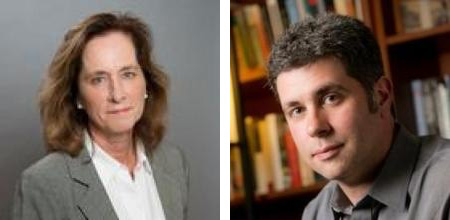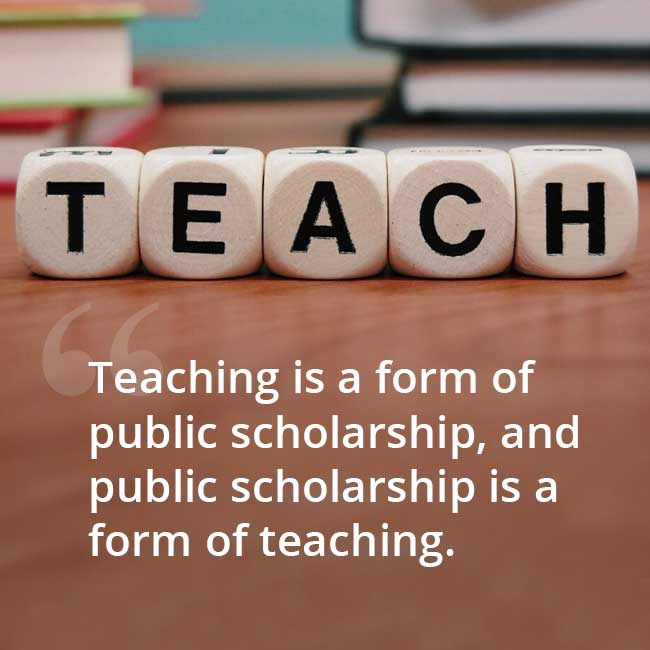By Kristen B. Neuschel, Associate Professor of History
Philip Stern, Gilhuly Family Associate Professor of History and Director of Graduate Studies

While we are fortunate to have a number of resources at Duke for graduate students seeking to become effective teachers in their disciplines, the History Department is unusual in having—in fact, requiring—a departmental course on pedagogy for all its Ph.D. students. We have experimented with ways to make that course, as well as the larger history program, to not only serve the traditional goal of preparing our students to transition into faculty roles, but also conceive of teaching in broad enough terms to be of use to students who move into other careers and help all our Ph.D.s reach broader publics with their work.
Previous iterations of this course focused primarily on training teaching assistants to teach at Duke. While certainly worthwhile, such an approach no longer reflects our students’ increasingly diverse career trajectories, including a wide range of jobs in and outside the university that require various forms of teaching and public scholarship. Our revamped pedagogy course is centered around one belief: Teaching is a form of public scholarship, and public scholarship is a form of teaching.
The new version of our course, revised with assistance from a PhD Innovation Grant from Versatile Humanists at Duke, proceeds from the assumption that practicing one form of teaching helps in other contexts of outreach. All true teaching assumes that we are not simply conveying information, but also translating disciplinary practice—meaning research methods as well as the results of research—to lay audiences of one sort or another. So, in our pedagogy course, we teach translation of historical scholarship for diverse audiences.
 The course asks students to first think about the wide range of audiences and the many genres of communication even a traditional career path encompasses: conference papers for colleagues in one’s sub-discipline, promotion statements to multidisciplinary committees, grant applications for multidisciplinary reviewers, as well as lectures and guided discussions for students at every level. We also note from the beginning the great variety of written compositions these traditional activities already require, and how those genres are multiplying, as we now all write for various digital platforms (like this one). In the course, as we translate from one setting or audience to another, writing is always at the center of our work.
The course asks students to first think about the wide range of audiences and the many genres of communication even a traditional career path encompasses: conference papers for colleagues in one’s sub-discipline, promotion statements to multidisciplinary committees, grant applications for multidisciplinary reviewers, as well as lectures and guided discussions for students at every level. We also note from the beginning the great variety of written compositions these traditional activities already require, and how those genres are multiplying, as we now all write for various digital platforms (like this one). In the course, as we translate from one setting or audience to another, writing is always at the center of our work.
Writing, in fact, comes first. The course opens with a discussion of how to sustain a productive writing life. Again, there are traditional reasons for establishing a productive and sustainable writing practice. Research shows that a small minority of higher-education faculty produce most of the published research in all disciplines. But conceiving of teaching and research as separate spheres, whose demands one “juggles,” also contributes to the problem.
On the other hand, if teaching is one form of (public) scholarship, then teaching and writing can proceed in a more synergistic relationship. (Time management and other practical solutions can address the inevitable conflicts and over-commitments, and these, too, are treated in the course.) To be continually engaged in translating historical knowledge for particular publics—that’s the work of historians, in any “job.”
We have supported the work in the pedagogy class with targeted events and colloquia. In some of them, students have been introduced to recent Ph.D.s following nontraditional careers. In others they have encountered teacher-scholars who discuss their own outreach to broader publics. We have also sponsored discussions with scholars from Duke and beyond to help students better imagine the ways in which they can structure their work now to better inform and support their career goals later, especially as they evolve along the way.
What are our successes so far and our challenges going forward? We have changed the conversation about teaching with two cohorts of graduate students in the department, and we are intent on institutionalizing this change by various means. But the tendency to wall off teaching from other career choices is real, as is the inclination to keep the practice of history sequestered behind the walls of the academy. We hope structural and conceptual changes to the curriculum can break down these ossified cultural and institutional barriers among students as well as faculty. An even greater challenge is the fact that we have asked our graduate students to think more broadly about their work as historians at precisely the same time as they are thinking more deeply and focusing more narrowly on specific research questions.
As any linguist knows, translating requires expertise. For scholars in any discipline it requires practice, first in recognizing an audience and appropriate genres for reaching that audience, and second, practice (lots of practice) in that outreach. The second-year history Ph.D. students enrolled in the pedagogy course have only begun practicing.
